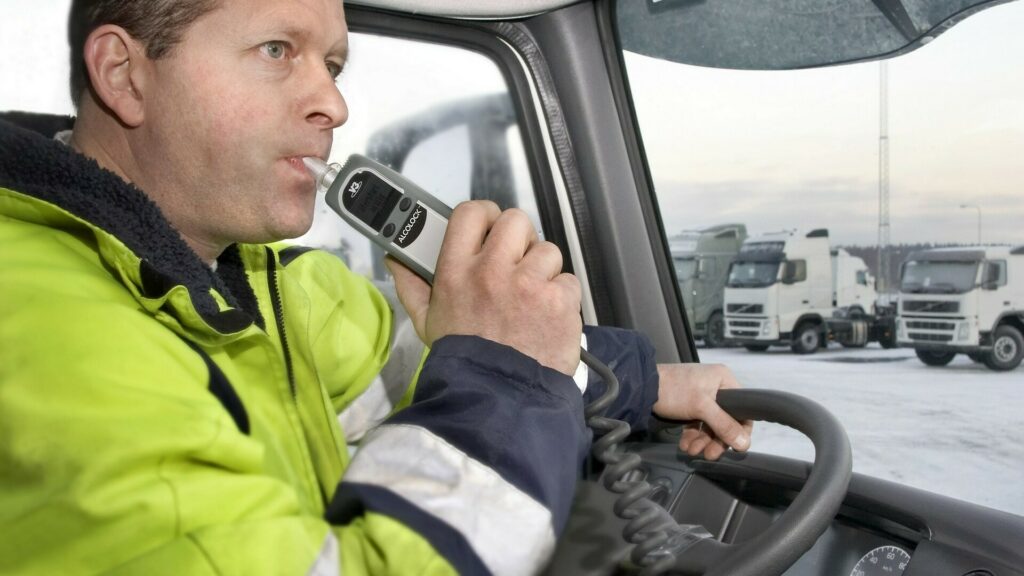Yes, there’s a potential kill switch of sorts coming to future cars but it’s aimed squarely at ending drunk driving
5 hours ago
 –>
–> 
–>
Headlines about a bill calling to incorporate a “kill switch” into all new cars in the future are making the news rounds. We’ve sorted out fact from fiction and the truth is that yes indeed, there’s tech likely coming to cars that could limit or eliminate operation. The text ppears to put drunk driving alone in its crosshairs but is that where it’ll stop?
Eliminating drunk driving is a noble aspiration. It’s the leading cause of traffic fatalities in the USA. In fact, on average, it kills a person in the country every 52 minutes. That’s 28 people every single day or over 10,000 each year. Not only does drunk driving exact a devastating human toll, but it also carries a hefty financial burden, with the National Highway Traffic Safety Administration (NHTSA) estimating an annual cost of over $44 billion in deaths and damages.
Inside the text of the Inflation Reduction Act is a small bit specifically aimed at curtailing this courage. Section 24220 is dubbed “Advanced Impaired Driving Technology” and it requires that future cars have “advanced drunk and impaired driving prevention technology.” The bill spells out exactly what that looks like too.
advertisement scroll to continue
More: Suspected Drunk Driver Thinks He’s Free To Go If He Puts The Vodka In The Trunk

It calls it a system that can “passively monitor the performance of a driver of a motor vehicle to accurately identify whether that driver may be impaired and prevent or limit motor vehicle operation if impairment is detected.” Of course, how it does that is of vital importance and the bill clarifies its intended methodology too.
Specifically, it says that it’ll passively and accurately detect if a driver has a blood alcohol concentration above the legal limit. If it detects an illegal amount it’ll disable or limit the vehicle. The bill doesn’t specify exactly what technological measures the NHTSA must enact to meet these standards. A number of different companies have worked on various methods to accurately detect blood alcohol content. Some have hit serious roadblocks while others seem quite close to fruition.
The bill also doesn’t say anything about what happens when the system gets triggered. Does it contact local law enforcement? Does it simply slow the car until it’s pulled over? Does it stop in the middle of a highway? Evidently, the NHTSA is going to have to make these choices.
Finally, it’s worth noting that just about anything could happen with this bill in the future. The NHTSA could push it off, it could enact pretty stringent requirements, or the whole thing could go away if a court finds that it’s a breach of the Fourth Amendment. That statute says that “The right of the people to be secure in their persons, houses, papers, and effects, against unreasonable searches and seizures, shall not be violated.” As FEE.org rightly points out, this bill might not meet that standard.
SEC. 24220. <<NOTE: 49 USC 30111 note.>> ADVANCED IMPAIRED DRIVING TECHNOLOGY. (a) Findings.--Congress finds that-- (1) alcohol-impaired driving fatalities represent approximately \1/3\ of all highway fatalities in the United States each year; (2) in 2019, there were 10,142 alcohol-impaired driving fatalities in the United States involving drivers with a blood alcohol concentration level of .08 or higher, and 68 percent of the crashes that resulted in those fatalities involved a driver with a blood alcohol concentration level of .15 or higher; (3) the estimated economic cost for alcohol-impaired driving in 2010 was $44,000,000,000; (4) according to the Insurance Institute for Highway Safety, advanced drunk and impaired driving prevention technology can prevent more than 9,400 alcohol-impaired driving fatalities annually; and (5) to ensure the prevention of alcohol-impaired driving fatalities, advanced drunk and impaired driving prevention technology must be standard equipment in all new passenger motor vehicles. (b) Definitions.--In this section: (1) Advanced drunk and impaired driving prevention technology.--The term ``advanced drunk and impaired driving prevention technology'' means a system that-- (A) can-- (i) passively monitor the performance of a driver of a motor vehicle to accurately identify whether that driver may be impaired; and (ii) prevent or limit motor vehicle operation if an impairment is detected; (B) can-- [[Page 135 STAT. 832]] (i) passively and accurately detect whether the blood alcohol concentration of a driver of a motor vehicle is equal to or greater than the blood alcohol concentration described in section 163(a) of title 23, United States Code; and (ii) prevent or limit motor vehicle operation if a blood alcohol concentration above the legal limit is detected; or (C) is a combination of systems described in subparagraphs (A) and (B). (2) New.--The term ``new'', with respect to a passenger motor vehicle, means that the passenger motor vehicle-- (A) is a new vehicle (as defined in section 37.3 of title 49, Code of Federal Regulations (or a successor regulation)); and (B) has not been purchased for purposes other than resale. (3) Passenger motor vehicle.--The term ``passenger motor vehicle'' has the meaning given the term in section 32101 of title 49, United States Code. (4) Secretary.--The term ``Secretary'' means the Secretary of Transportation, acting through the Administrator of the National Highway Traffic Safety Administration. (c) Advanced Drunk and Impaired Driving Prevention Technology Safety Standard.-- <<NOTE: Deadline.>> Subject to subsection (e) and not later than 3 years after the date of enactment of this Act, the Secretary shall issue a final rule prescribing a Federal motor vehicle safety standard under section 30111 of title 49, United States Code, that requires passenger motor vehicles manufactured after the effective date of that standard to be equipped with advanced drunk and impaired driving prevention technology. (d) <<NOTE: Compliance. Time period.>> Requirement.--To allow sufficient time for manufacturer compliance, the compliance date of the rule issued under subsection (c) shall be not earlier than 2 years and not more than 3 years after the date on which that rule is issued. (e) <<NOTE: Determinations.>> Timing.--If the Secretary determines that the Federal motor vehicle safety standard required under subsection (c) cannot meet the requirements and considerations described in subsections (a) and (b) of section 30111 of title 49, United States Code, by the applicable date, the Secretary-- (1) <<NOTE: Extension. Deadline.>> may extend the time period to such date as the Secretary determines to be necessary, but not later than the date that is 3 years after the date described in subsection (c); (2) <<NOTE: Reports.>> shall, not later than the date described in subsection (c) and not less frequently than annually thereafter until the date on which the rule under that subsection is issued, submit to the Committee on Commerce, Science, and Transportation of the Senate and the Committee on Energy and Commerce of the House of Representatives a report describing, as of the date of submission of the report-- (A) the reasons for not prescribing a Federal motor vehicle safety standard under section 30111 of title 49, United States Code, that requires advanced drunk and impaired driving prevention technology in all new passenger motor vehicles; (B) the deployment of advanced drunk and impaired driving prevention technology in vehicles; [[Page 135 STAT. 833]] (C) any information relating to the ability of vehicle manufacturers to include advanced drunk and impaired driving prevention technology in new passenger motor vehicles; and (D) <<NOTE: Timeline.>> an anticipated timeline for prescribing the Federal motor vehicle safety standard described in subsection (c); and (3) <<NOTE: Deadline. Reports.>> if the Federal motor vehicle safety standard required by subsection (c) has not been finalized by the date that is 10 years after the date of enactment of this Act, shall submit to the Committee on Commerce, Science, and Transportation of the Senate and the Committee on Energy and Commerce of the House of Representative a report describing-- (A) the reasons why the Federal motor vehicle safety standard has not been finalized; (B) the barriers to finalizing the Federal motor vehicle safety standard; and (C) <<NOTE: Recommenda- tions.>> recommendations to Congress to facilitate the Federal motor vehicle safety standard.
